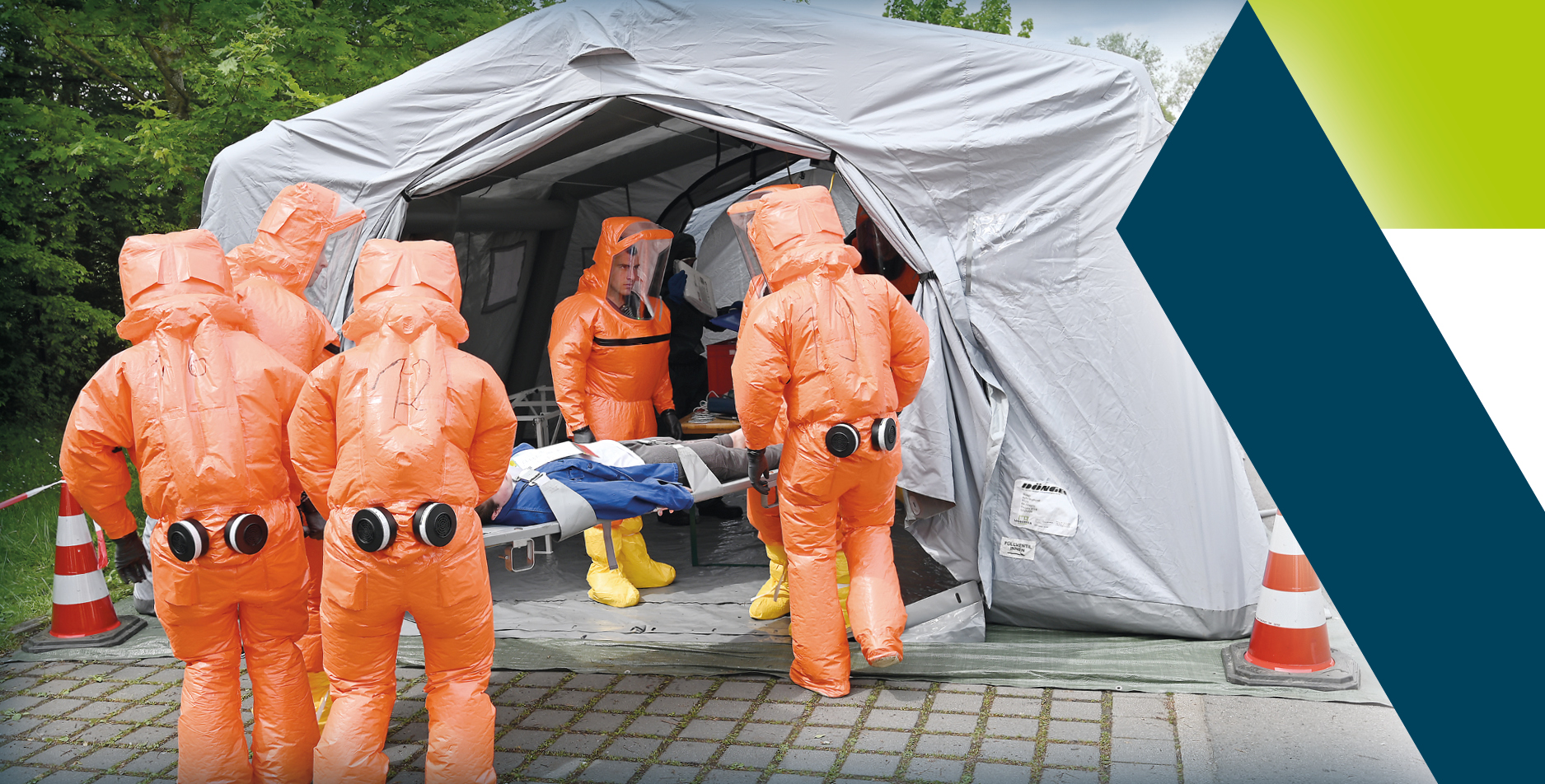31/10/2024

Chemical Protection Suits for Disaster Response
Areas of Use and Selection Criteria for Chemical Protection Suits
Ensuring the safety of emergency personnel during unexpected events, such as epidemics or chemical accidents, is paramount. In critical situations involving toxic substances, the right protective measures can be vital to safeguard lives and health. Chemical protection suits (CPS) are essential, especially for emergency personnel, including firefighters, disaster relief organizations, the military, technical relief teams, and humanitarian aid organizations such as the German Red Cross, Malteser, and Johanniter.
Key Challenges: Decontamination, CBRN Substances, and Infection Control
Personnel in sectors like chemical and petrochemical industries, pharmaceuticals, and rescue services are frequently exposed to harmful substances, such as aerosols, corrosive liquids, dangerous vapors, as well as viruses and bacteria.
Particularly challenging scenarios occur when chemical warfare agents or toxic industrial chemicals are released. Toxic gases, like sarin, chlorine, or phosgene, can cause life-threatening harm almost instantly. In such cases, proper protective gear — particularly CPS — is crucial to effectively protect responders from these dangers.
Areas of Use for Chemical Protection Suits
CPS are used in a wide range of operations, including:
- Firefighting Operations: For fires at chemical plants or hazardous material incidents.
- Disaster Relief: For ABC hazard scenarios (atomic, biological, or chemical threats).
- Military: For protection against chemical warfare agents and in international operations.
- Humanitarian Aid Organizations: For the initial care and rescue of individuals exposed to hazardous materials.
CPS are also utilized in various industrial settings where the release of toxic substances is possible.
Key Criteria for Selecting Chemical Protection Suits
Selecting the right CPS involves several critical factors:
- Suit Types: CPS are classified and tested for permeation resistance (the ability to prevent chemicals from penetrating the material), according to EN 943-1 and EN 943-2 standards.
Type 1 Suits offer the highest level of protection, suitable for high-toxicity situations.
These are subdivided into:
Type 1a: Equipped with an independent air supply carried inside the suit.
Type 1 b: Independent air supply carried outside the suit.
Type 1 c: Uses a positive-pressure air supply from an external source.
Lower types (2 through 6) provide protection against less dangerous chemicals and may not be gas-tight. They include options for positive-pressure air supply (Type 2), liquid-tight (Type 3), spray-tight (Type 4), limited particle protection (Type 5), or mist-resistance for spray protection (Type 6). - Chemical Resistance: Different materials offer protection against specific chemicals. For example, suits protecting against corrosive acids or alkalis should be made of highly durable materials like butyl rubber or PVC. Gas-tight suits are necessary to protect against gases or vapors, blocking hazardous substances from entering.
- Comfort and Mobility: While high protection levels are essential, comfort cannot be ignored. Wearing protective suits can be physically demanding, so CPS should allow adequate ventilation and freedom of movement to reduce physical strain on personnel.
- Ventilation and Temperature Management: Operations in hazardous environments can be extended, leading to significant temperature increases within the suit. Some suits, like the VenION protective suit, have advanced ventilation technology to regulate body temperature and reduce the risk of overheating — a crucial factor, especially in high ambient temperatures.
- Decontamination during Suit Removal: After an operation, suits must be removed without spreading contamination. Efficient exit designs, combined with the use of decontamination showers, help ensure the safe removal of suits without the risk of carrying contaminants.
Click here to see the chemical protection suits by BartelsRieger
- Chemical protection suits for various applications.
- Suits with advanced ventilation systems, such as the VenION protective suit, which has been successfully tested for CBRN scenarios.

